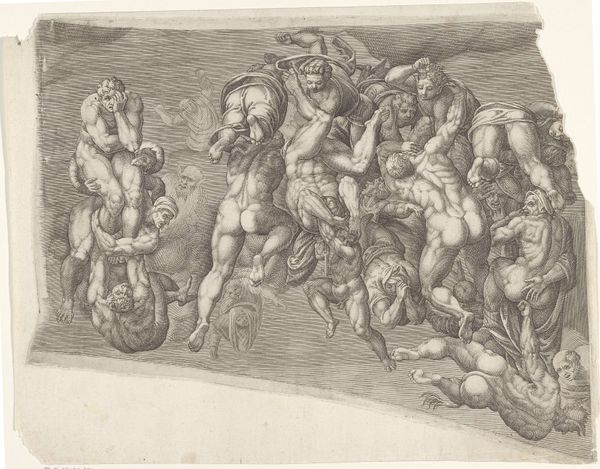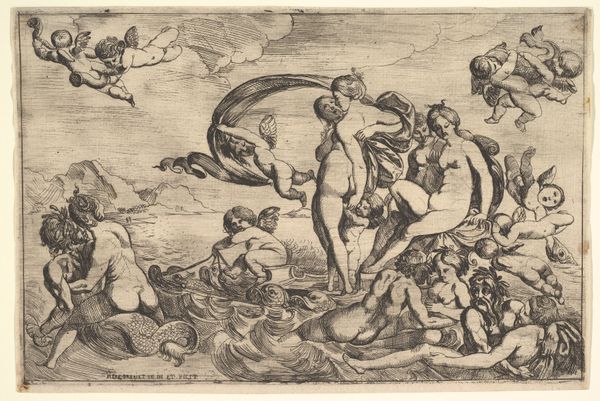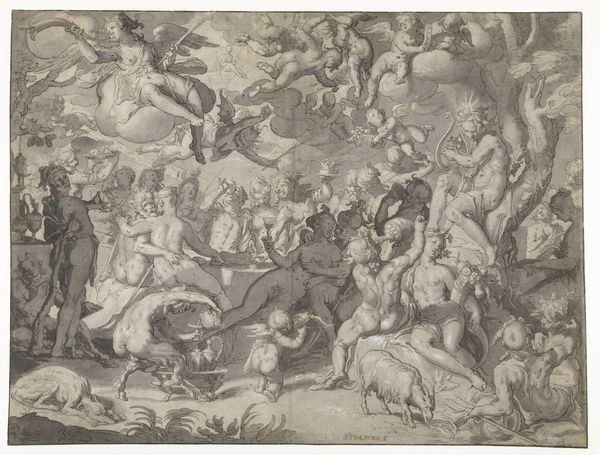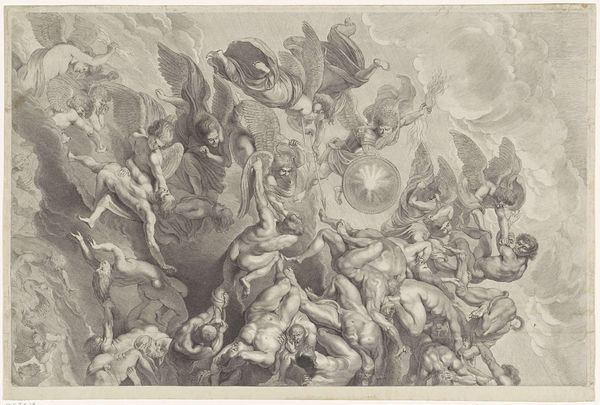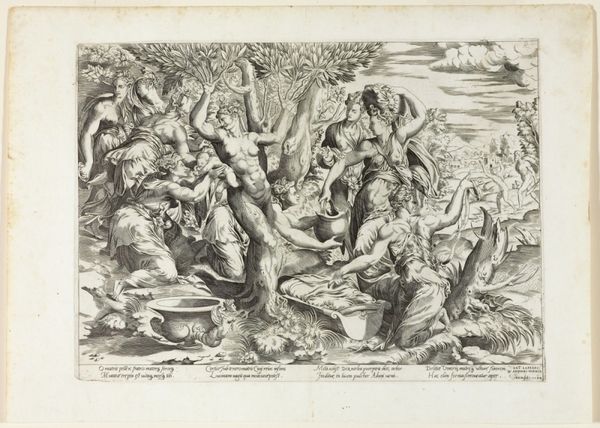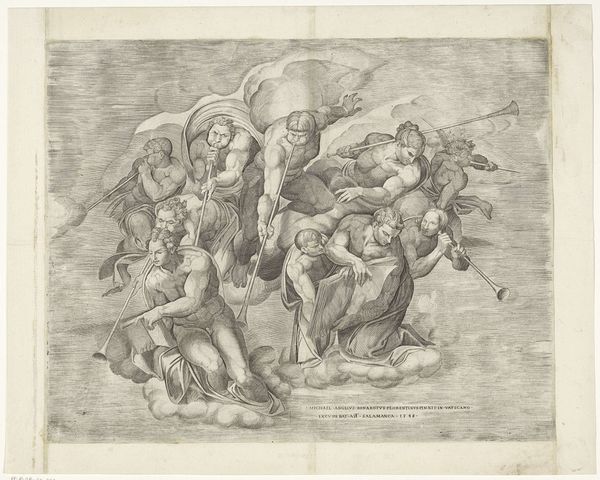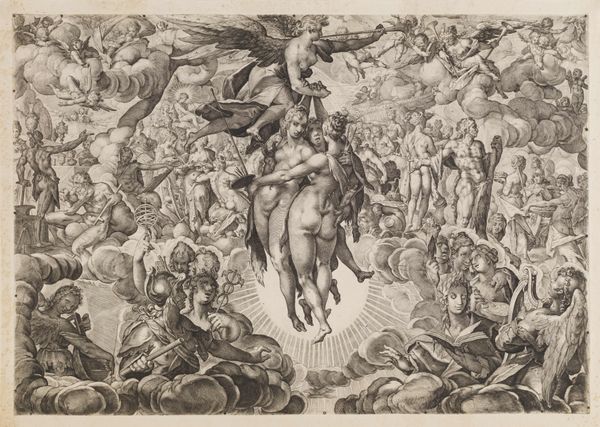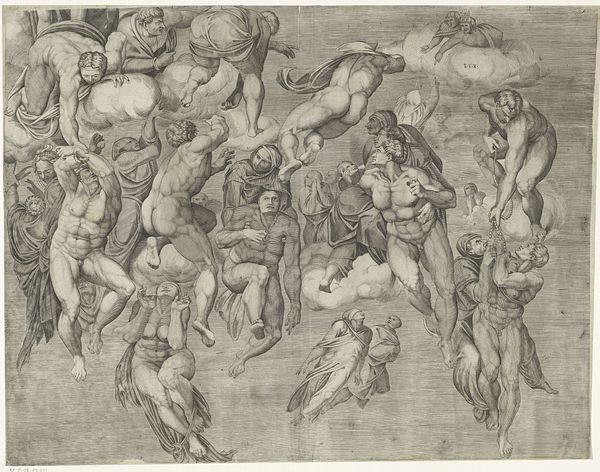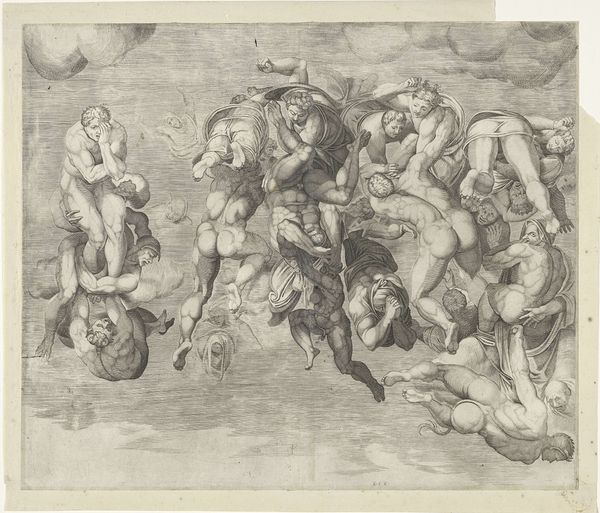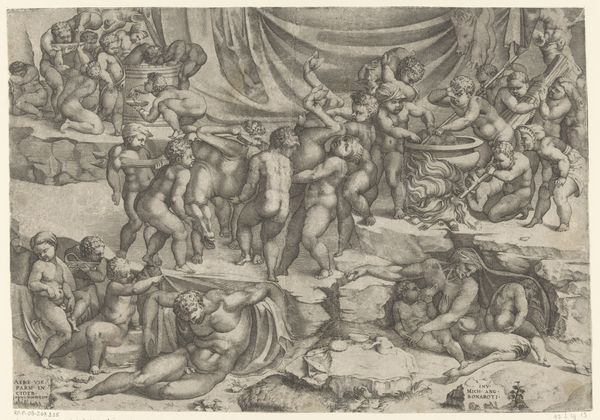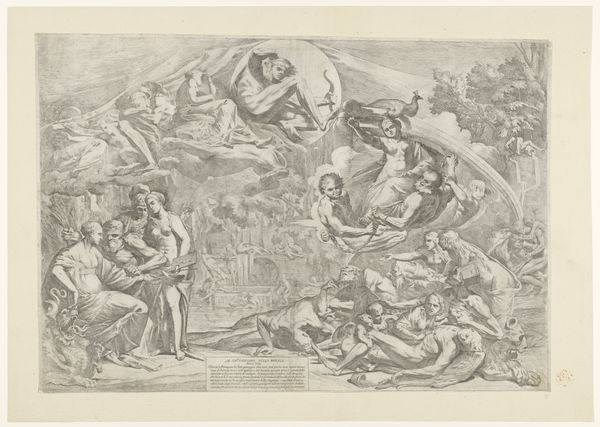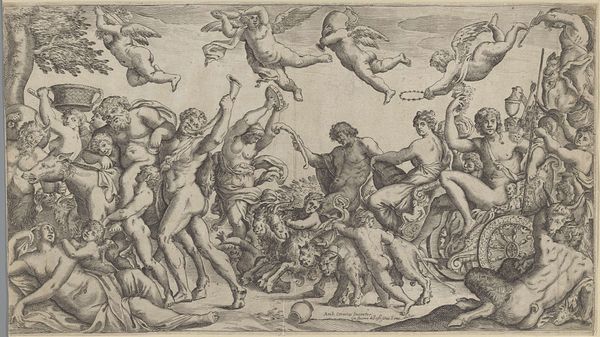
print, engraving
#
allegory
#
baroque
# print
#
figuration
#
line
#
history-painting
#
italian-renaissance
#
engraving
Dimensions: height 399 mm, width 878 mm
Copyright: Rijks Museum: Open Domain
Curator: This engraving from 1642 by Giovanni Battista Vanni is titled "Hemelvaart van Maria," or "The Assumption of Mary." It’s an incredibly dense composition, isn’t it? What’s your initial read of the work? Editor: Overwhelming! In its intricate lines and the sheer volume of figures—cherubs, angels, saints—there’s an implied monumentality even within this relatively small printed format. I’m drawn to the sheer labor that went into producing such a detailed and layered image. The texture of the engraving itself really lends to its devotional aura. Curator: Exactly! I see the print operating on several intersectional levels. Its depiction of Mary’s Assumption taps into questions about divine femininity and the Catholic Church’s often fraught relationship with female agency, doesn't it? The social construction of ideal motherhood looms large here, but in an uplifting context. Editor: The materials—the metal plate, the ink, the press—and the hands involved speak to a specific historical moment. Religious art wasn’t just divinely inspired; it was painstakingly manufactured, bought, and distributed, reflecting socioeconomic hierarchies as much as spiritual aspirations. The line work carries symbolic weight and literal, material presence. How were such works used then? Curator: Prints like this would have served didactic purposes. Not only solidifying dogma during the Counter-Reformation but acting almost as portable icons that could spread this vision beyond the high altar, right into people's homes. In the way its style also adopts the aesthetics of the Italian Renaissance, it suggests, at least visually, a seamless history rooted in biblical foundations and endorsed by the institution. Editor: I’m struck by how that mass dissemination impacts its artistic 'value' then. The accessibility offered by printmaking democratizes the image, while the material craft asserts an alternative economy for artists to exist. What do you take away most, contemplating it here in this collection? Curator: I'm moved to think about Mary not as a static symbol of piety but a dynamic, ever-shifting figure of religious significance, continually being reinterpreted. Editor: Agreed. And perhaps appreciating the physical production itself prompts a valuable, embodied engagement for contemporary observers.
Comments
No comments
Be the first to comment and join the conversation on the ultimate creative platform.
